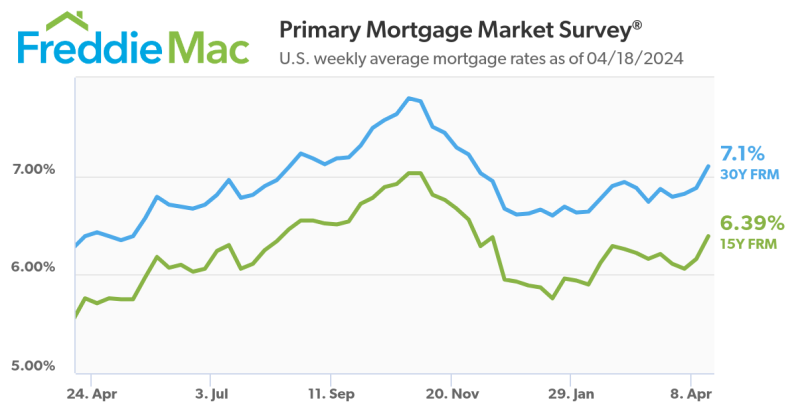Advertisement
Who's at fault?
It is very interesting to me that investors point to lender fraud and the mortgage broker's moral turpitude as they explain the defaults and foreclosures being experienced. Where were all the whistle blowers referencing the future values in broker opinion letters? How did the licensed appraisers fail to protect the industry? The answer is that they did not fail, and the investors ignored their warnings.
I recently visited a Web site where it listed the top 25 lenders and who bit the dirt. Out of 25, nine have gone under or been re-purchased. New Century, Fremont General Corporation, Ameriquest, First Franklin, Ownit Mortgage Solutions Inc., Mortgage Lenders Network USA Inc. and ResMAE are some names that appeared. I guess the same brokers who have moral turpitude and continue to fraud lenders were all signed up with these investors--not!
The trainers and instructors for the Close More University never taught dishonesty or slight of print--and the school has gone the way of the Dodo birds. Who is to blame? Who is at fault? Let us take a brief history tour and dissect our current industry trends by understanding the background behind underwriting criteria.
It the early '70s, the U.S. Department of Housing and Urban Development had the Federal Housing Administration (FHA) 245 product. It was a graduated, negative amortizing loan that allowed 120 percent loan-to-value (LTV) over the first six years. It may still be on the FHA loan list, but no investor would fund it as a result of the default percentage. I used it to purchase my first home. I paid it off in three years when I sold the home, and it was a great product to get me into a home.
At the turn of this century, the industry produced 120 to 150 percent LTV products that were quickly pulled because of the default percentages. These are just two examples of investor knowledge on products that offer high LTVs and little collateral. A third example can be the 100 percent non-owner product, but I bore you with such history.
Now, let us review how we underwrite someone. This flippin' credit score. What a piece this number has become. It is the number one indicator of a borrower's worthiness, yet the creators stated that it would never be a key factor in determining credit worthiness. With so many systems and score ranges, lenders using outdated scoring systems and people learning how to change the scores quickly can be a contributing factor for loan failure.
Instead of a credit score, what about reviewing how the borrower pays down and pays off debt? Of course, this should not be the first underwriting element. Occupancy should be the first criteria. Instead of income verification, what about the strength of the employer? Shoot! What are those who are unemployed due to the dead lenders referenced in the second paragraph doing for their house payments? What is the percentage of payment defaults related to today's defunct lenders?
Solvency is another issue for business failure. The banks and investing firms continue to lobby and gain less and less pressure to be solvent on their notes. Politics play a role in this current industry as well. As investing companies became less solvent, they took more risks. I contacted many investing firms over the past three years and attempted to train them on what was on the horizon for sub-prime and alternative loan products.
I received a unanimous decline and the reason that they gave: "The loss is within the predicted percentile and we are banking on the volume." I quickly discovered that investors saw the picture and they knew it would all end, but they milked it for all that they could. With less cash to cover loss, investors tightened up on the percentage on loss.
This has not been a housing bubble that has burst. This has been lending firms that ignored all signals of astronomical values climbing too fast and too high. The greed factor came into play and now they call foul and seek bailouts and protection from share holders.
I wonder where the executives of these defunct businesses are now. I do not think that they are drawing unemployment like the rank and staff. We come full circle and find that if an investor offers a loan product at 220 percent LTV with a 505 credit score and the borrowers can state their income, the brokers will sell the product. The brokers are not to blame for selling what is being offered in loan product.
The blame falls squarely on the investors that accept and allow loan products to be offered. The loan product drive was not driven by any other economic indicator except for the want to make gain while banking on future appreciation. Investors made bank and as soon as it went south, they whined about brokers being immoral. Cut it out, because this author has grown tired of crocodile tears.
If we truly seek loan reform, if we want to rid the industry of fraud, I suggest that the others, and not the investors, develop and control loan guidelines. Government mortgage-backed securities have always been a safe investment. We probably need more governmental oversight for investors to cease destroying people's lives.
There is nothing wrong with a stated 100 percent loan for a single mother. She has proven that she will always make her loan payment. There is also nothing wrong with the firefighter who has a non-sourced second income. We have history on these borrowers and they are stellar as quality borrowers, no matter what credit scores they have. However, without authoritative oversight, the loan guidelines, greed and hedging for additional profit will continue to cause disastrous results.
Now, I do not mind what has transpired recently. I had no securities backed by sub-prime product, nor did I have any funds with one of the listed companies. The past five years brought many into homeownership and the default remains relatively low. I just want the investors to cease accusations against brokers and stand up for their lack of integrity and ignoring the forecasters.
If the lending industry truly wanted to clean up and eliminate fraud, they would do as the insurance companies have done. They would bank risk on when a borrower would be getting his first divorce, his first major medical experience and when his children enter college.
Life experiences are what cause default and foreclosure. Ratios, scores and reserves criteria fuel the industry trends, but are not the cause for default. Let's start underwriting real issues that impact a borrower's ability to repay the loan and stop making up excuses when an investor is not pleased with single-digit return. In essence, every lender is at fault for utilizing underwriting guidelines that continue to fall short of discovering true impacts to default and foreclosure.
Joe Corno is president of Utah-based We Be Consulting and Seminars. He may be reached at (801) 836-2077 or e-mail [email protected].
About the author





